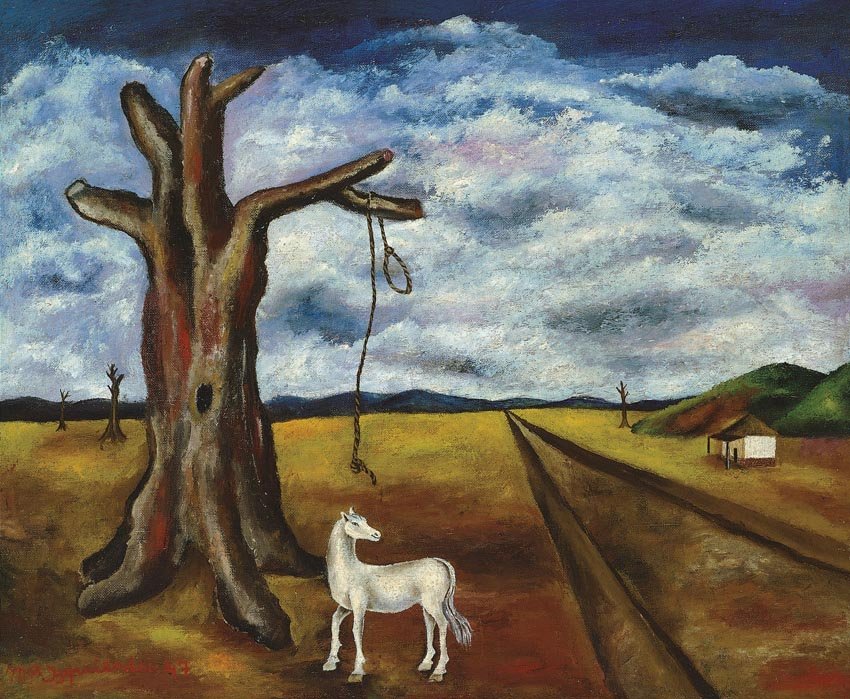
The Rope
Author: María Izquierdo
Name: The Rope (La Soga)
Date: 1937
Material: Oil on canvas
Dimensions: 16.93 × 20.08 inches.
Location: Blaisten Collection
In The Rope (La Soga, 1947), María Izquierdo crafts a stark, desolate landscape imbued with quiet tension and symbolic depth. At the center, a barren tree stretches its twisted branches across the sky, from which hangs a noose—a foreboding symbol that remains eerily unclaimed. Beneath it, a white horse stands still, seemingly unaffected by the ominous presence above. This juxtaposition of the noose and the horse, a creature traditionally associated with freedom, power, and spiritual transcendence, creates a striking contrast between potential doom and quiet resilience.
Horses were a recurring motif in Izquierdo’s work, often linked to her childhood memories of being trampled by a stampede and later kidnapped by circus performers—experiences that instilled in her a lasting fascination with themes of fate, captivity, and survival. In The Rope, the lone horse may serve as an allegory for endurance in the face of existential uncertainty, reinforcing Izquierdo’s continued exploration of personal and spiritual struggles.
The vast, empty road that stretches into the horizon emphasizes solitude and an undefined journey, drawing the viewer’s gaze beyond the immediate setting toward an unknown destination. This open-ended space suggests not only physical isolation but also an introspective passage—perhaps a meditation on life’s fragile balance between freedom and constraint, mortality and persistence.
Created during a time when Izquierdo faced increasing marginalization within the Mexican art world, The Rope can be read as a deeply personal reflection on artistic and existential resilience. Having been denied the opportunity to complete her commissioned mural in 1945 due to the intervention of Diego Rivera and David Alfaro Siqueiros, Izquierdo turned inward, expressing through her easel paintings a quiet yet defiant assertion of creative autonomy. The leafless tree, weathered yet standing, speaks to loss and endurance, while the horse beneath the noose embodies an unwavering serenity, an image of grace and dignity amid the looming specter of fate.
In this work, Izquierdo distills her lifelong engagement with themes of destiny, spiritual transcendence, and the cyclical nature of life and death. The tension between stillness and impending action, between open space and confined fate, reflects the delicate balance she explored throughout her career.